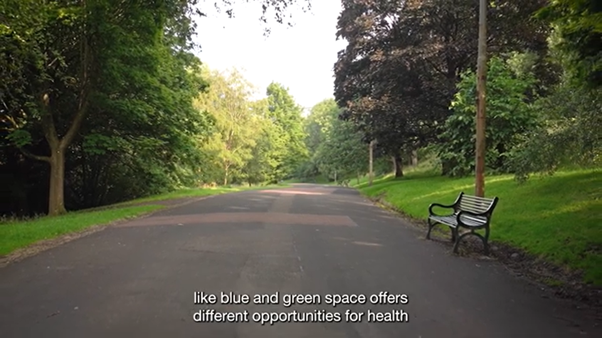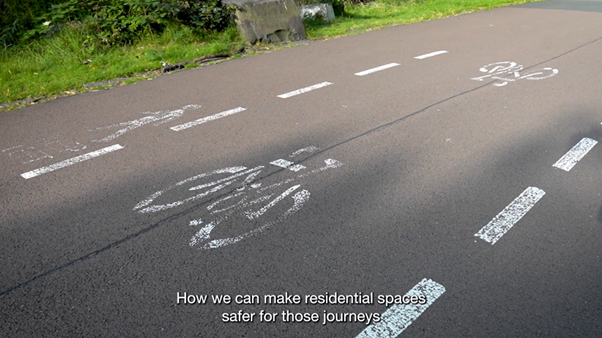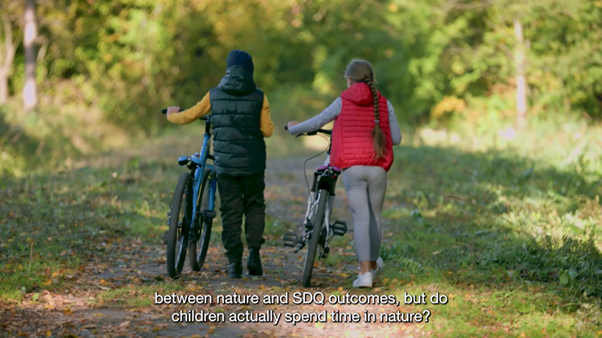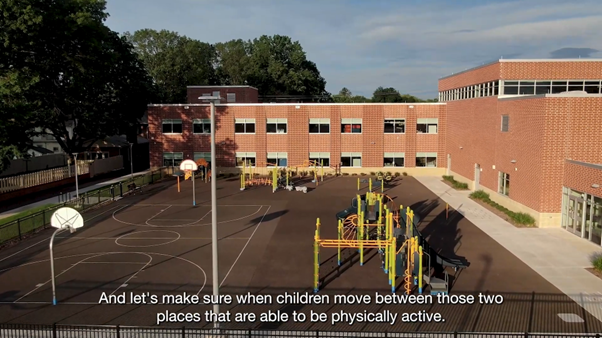Studying Physical Activity in Children’s Environments (SPACES)
SPACES is a Scotland-wide, long-term, research study exploring how young people use, experience, and move within their environments. Understanding these relationships allows us to learn about how our built, natural, and social (for example, friends and family) environment can impact our health and well-being. With this information we can consider ways in which we can change aspects of the environment for the better. This will help inform how we can create more positive experiences and opportunities for all young people, regardless of who they are or where they come from, particularly those who are socioeconomically less advantaged.
So how did we do it?
The young people involved in SPACES were recruited from the Growing Up in Scotland (GUS) study, a long-term project tracking the lives of thousands of children and their families from the early years, through childhood and beyond. A large focus of the GUS study is to collect important information as the young people have grown up, including health and wellbeing data; for example: physical, cognitive, social and emotional development as well as other outcomes important for childhood health and wellbeing.
The SPACES project started in 2015/2016 and collected data in young people aged 10/11 years old. A follow-up data collection of the same young people, now aged 17/18 years old, is currently ongoing. At both timepoints, the young people were asked to wear two measurement devices for 8 days. These devices measured how active the young people were and where this activity occurred. These devices do similar things like the smart watches you can buy today, such as the Apple watch or Fitbit.
When combined with geographical maps - like those you see in car satnavs - we can answer a lot of questions about how young people use, experience, and move within their environments.
We are then able to link this data to all the rich information collected from GUS, letting us go one step further by exploring how our relationship with the wider environment may influence our health.
The SPACES project is conducting research across four main areas:

Physical activity
Physical activity is an important health behaviour with strong links to positive physical and mental health and well-being. SPACES has collected lots of information on children’s device measured physical activity levels, meaning we are able to explore how many children across Scotland meet the current recommended levels of physical activity, and how this differs depending on who you are or where you are from. Knowing more about these differences is the first stage to trying to improve them.
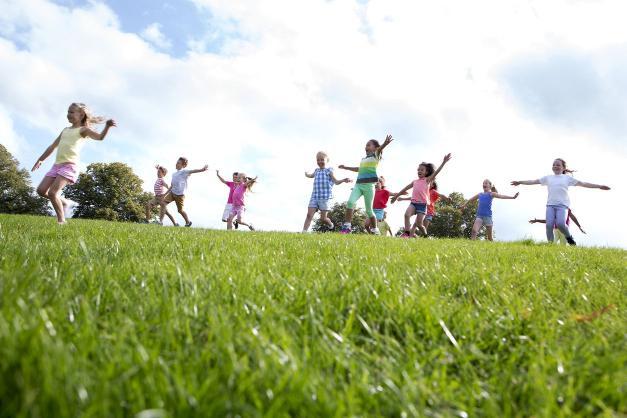
Exposure to unhealthy commodities
Exposure to unhealthy commodities – in recognition that the more we are exposed to shops that sell things like tobacco, alcohol, and fast food, the greater chance we are to consume those products. We are currently exploring the link between exposure, engaging in these behaviours (like smoking, drinking, eating fast food), and health. From this we can also learn if this is better or worse for certain groups of young people. Only then can we know enough to argue for change to where shops are allowed to open, and restrictions on how they advertise and sell their potentially unhealthy products.
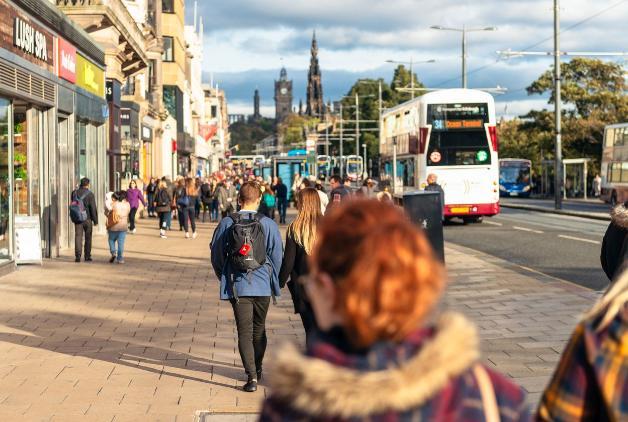
Use of the physical environment
Use of the physical environment – how our environment impacts our movement by foot, bike, and scooter compared to the car means we are more or less likely to use active forms of transport. Actively commuting to school, to leisure opportunities, or to work has a positive relationship with our – and the planet's – health. Data from the SPACES project can tell us how our physical transportation network can be improved to best serve young people.
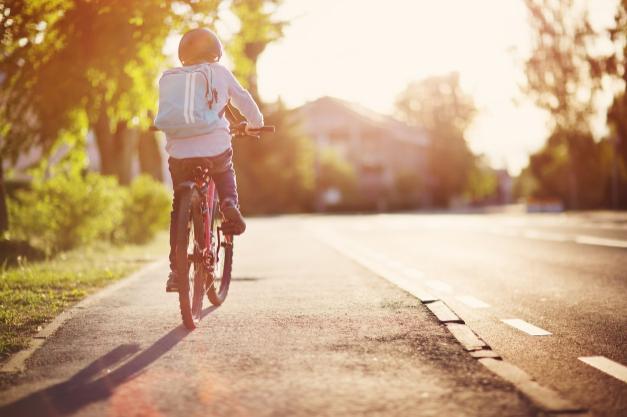
Links between home neighbourhood and social and emotional outcomes
Links between home neighbourhood and social and emotional outcomes – where we stay is an important predictor of our health. Access to things like high quality public parks, woodlands, natural spaces, healthcare, primary/secondary schooling, leisure facilities, and supermarkets not equally distributed across all neighbourhoods in the country. Many people either don’t have these things physically available to them, or can’t access them easily. We can explore the relationship between having or not having access to these local amenities and young people’s health and wellbeing. Ultimately, we want to influence the way neighbourhoods are designed to improve those who need it most.
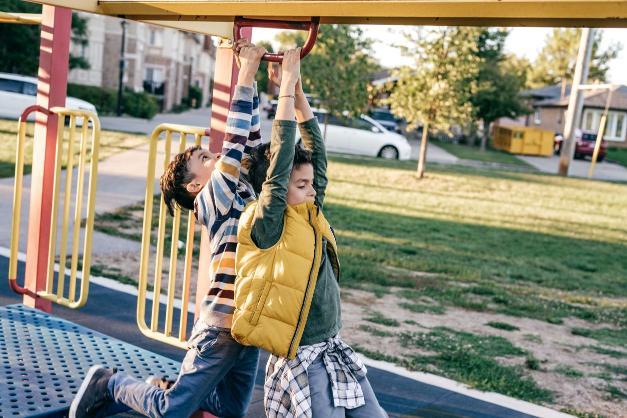
SPACES overview
Dr Paul McCrorie discusses the SPACES study, its impact so far and its future direction.

SPACES infographics
Our infographics provide a detailed overview of each of our four research areas
Places and health
Professor Rich Mitchell discusses how the places in which children live and play shapes their health.
Places and health (short version)
Professor Rich Mitchell discusses how the places in which children live and play shape their health.
Exposures to unhealthy commodities
Dr Fiona Caryl discusses children's day-to-day exposures to unhealthy commodities.
20-minute neighbourhood
Dr Jon Olsen discusses what a 20-minute neighbourhood looks like for children.
Active travel
Dr Jon Olsen discusses how to help more Scottish children walk, wheel or cycle to school.
Greenspace and mental health
Dr Paul McCrorie discusses how greenspace reduces inequalities in children’s mental health.
Physical activity
Dr Paul McCrorie discusses how physically active Scottish children are.
Impact of SPACES to date
The SPACES project has amassed over 15 journal article publications, presentations at international conferences, knowledge exchange events, and public engagement opportunities, with many having received substantial media coverage (print and radio).
Publications
- Olsen, J.R., Caryl, F.M., Nicholls, N., Smith, M., McCrorie, P. and Mitchell, R., 2023. Inequalities in neighbourhood features within children’s 20-minute neighbourhoods and variation in time spent locally, measured using GPS. Wellbeing, Space and Society, 5, 100174.
- Wong, L.S., Reilly, J.J., McCrorie, P. and Harrington, D., 2023. Physical activity levels during school recess in a Nationally representative sample of 10- to 11-year-olds. Pediatric Exercise Science.
- Caryl, F.M., Pearce, J., Mitchell, R. and Shortt, N.K., 2022. Inequalities in children’s exposure to alcohol outlets in Scotland: a GPS study. BMC public health, 22(1), pp.1-11.
- Olsen, J.R., Caryl, F.M., McCrorie, P. and Mitchell, R., 2022. Socioeconomic inequality in Scottish children’s exposure to and use of natural space and private gardens, measured by GPS. Landscape and Urban Planning, 223, p.104425.
- Wong, L.S., Reilly, J.J., McCrorie, P. and Harrington, D.M., 2022. Moderate-to-vigorous intensity physical activity during school hours in a representative sample of 10–11-year-olds in Scotland. Journal of Science and Medicine in Sport.
- Almagor, J., Martin, A., McCrorie, P. and Mitchell, R., 2021. How can an agent-based model explore the impact of interventions on children's physical activity in an urban environment?. Health & place, 72, p.102688.
- McCrorie, P., Olsen, J.R., Caryl, F.M., Nicholls, N. and Mitchell, R., 2021. Neighbourhood natural space and the narrowing of socioeconomic inequality in children's social, emotional, and behavioural wellbeing. Wellbeing, Space and Society, 2, p.100051.
- Olsen, J.R., Leung, K.Y., Nicholls, N. and Loo, B.P., 2021. Do neighbourhood characteristics matter in understanding school children’s active lifestyles? A cross-region multi-city comparison of Glasgow, Edinburgh and Hong Kong. Children's geographies, 19(4), pp.488-504.
- Olsen, J.R., Patterson, C., Caryl, F.M., Robertson, T., Mooney, S.J., Rundle, A.G., Mitchell, R. and Hilton, S., 2021. Exposure to unhealthy product advertising: Spatial proximity analysis to schools and socio-economic inequalities in daily exposure measured using Scottish Children's individual-level GPS data. Health & Place, 68, p.102535.
- Caryl, F., Shortt, N.K., Pearce, J., Reid, G. and Mitchell, R., 2020. Socioeconomic inequalities in children’s exposure to tobacco retailing based on individual-level GPS data in Scotland. Tobacco control, 29(4), pp.367-373.
- McCrorie, P., Mitchell, R., Macdonald, L., Jones, A., Coombes, E., Schipperijn, J. and Ellaway, A., 2020. The relationship between living in urban and rural areas of Scotland and children’s physical activity and sedentary levels: A country-wide cross-sectional analysis. BMC Public Health, 20(1), pp.1-11.
- Macdonald, L., McCrorie, P., Nicholls, N. and Olsen, J.R., 2019. Active commute to school: does distance from school or walkability of the home neighbourhood matter? A national cross-sectional study of children aged 10–11 years, Scotland, UK. BMJ open, 9(12), p.e033628.
- Olsen, J.R., Mitchell, R., McCrorie, P. and Ellaway, A., 2019. Children's mobility and environmental exposures in urban landscapes: a cross-sectional study of 10–11 year old Scottish children. Social Science & Medicine, 224, pp.11-22.
- Hayball, F.Z. and Pawlowski, C.S., 2018. Using participatory approaches with children to better understand their physical activity behaviour. Health Education Journal, 77(5), pp.542-554.
- Hayball, F., McCrorie, P., Kirk, A., Gibson, A.M. and Ellaway, A., 2018. Exploring children's perceptions of their local environment in relation to time spent outside. Children & Society, 32(1), pp.14-26.
- McCrorie, P., Walker, D. and Ellaway, A., 2018. The unanticipated challenges associated with implementing an observational study protocol in a large-scale physical activity and global positioning system data collection. JMIR research protocols, 7(4), p.e9537.
- McCrorie, P., Mitchell, R. and Ellaway, A., 2018. Comparison of two methods to assess physical activity prevalence in children: an observational study using a nationally representative sample of Scottish children aged 10–11 years. BMJ open, 8(1), p.e018369.
Key achievements
- The SPACES study has international reach with over fifteen presentations at international conferences
- SPACES data has informed the updated UK Chief Medical Officers Physical Activity Guidelines in 2018
- SPACES data has provided evidence to for the National Performance Framework, including indicators to measure progress against the National Outcomes (e.g. children and young people, sustainable places, impact on environment, communities, health, and public services), and Active Scotland Outcomes (e.g. encouraging the inactive to be more active; and improving our active infrastructure – people and places).
- Work using SPACES data to understand young people’s exposure to tobacco outlets has been discussed at National and International Parliaments.
- We received funding from the University of Glasgow’s internal knowledge exchange funding scheme in 2019 to co-produce a range of innovative engagement and dissemination resources and activities that promote sustainable knowledge exchange for the educational sector. Working with the Children’s Parliament (internationally recognised for their human rights-based approach to working with and for children) and Actify (Social Enterprise company who have carved a significant online footprint through their digital platform) we created an engaging video created through the lens of children involved in the study, identifying discrete actions that could be taken to improve physical activity levels in older children.
Partners and collaborators
- Dr Paul Bradshaw, Director of Scottish Centre for Social Research
- Aidan Gallacher, CEO of Actify CIC
- Active Scotland Division, Scottish Government
- Professor Jasper Schipperijn, University of Southern Denmark
- Professor John Reilly, University of Strathclyde
- Dr Emma Coombes, University of East Anglia
- Professor Andy Jones, Public Health Expert Advisor at Norfolk County Council
- Children’s Parliament
Contact details
Dr Paul McCrorie
Research Fellow
Lead researcher of the SPACES study
Email: paul.mccrorie@glasgow.ac.uk
Access to data.
Growing Up in Scotland: Cohort 1, Sweep 8 Physical Activity Data, 2015-2016 can be accessed via UKDS – DOI: http://doi.org/10.5255/UKDA-SN-9120-1. We will also deposit any summary physical activity data arising from SPACES Timepoint 2 in 2024-25.
Supervision.
We would be delighted to hear from any prospective students who are interested in conducting a PhD using our SPACES dataset.



